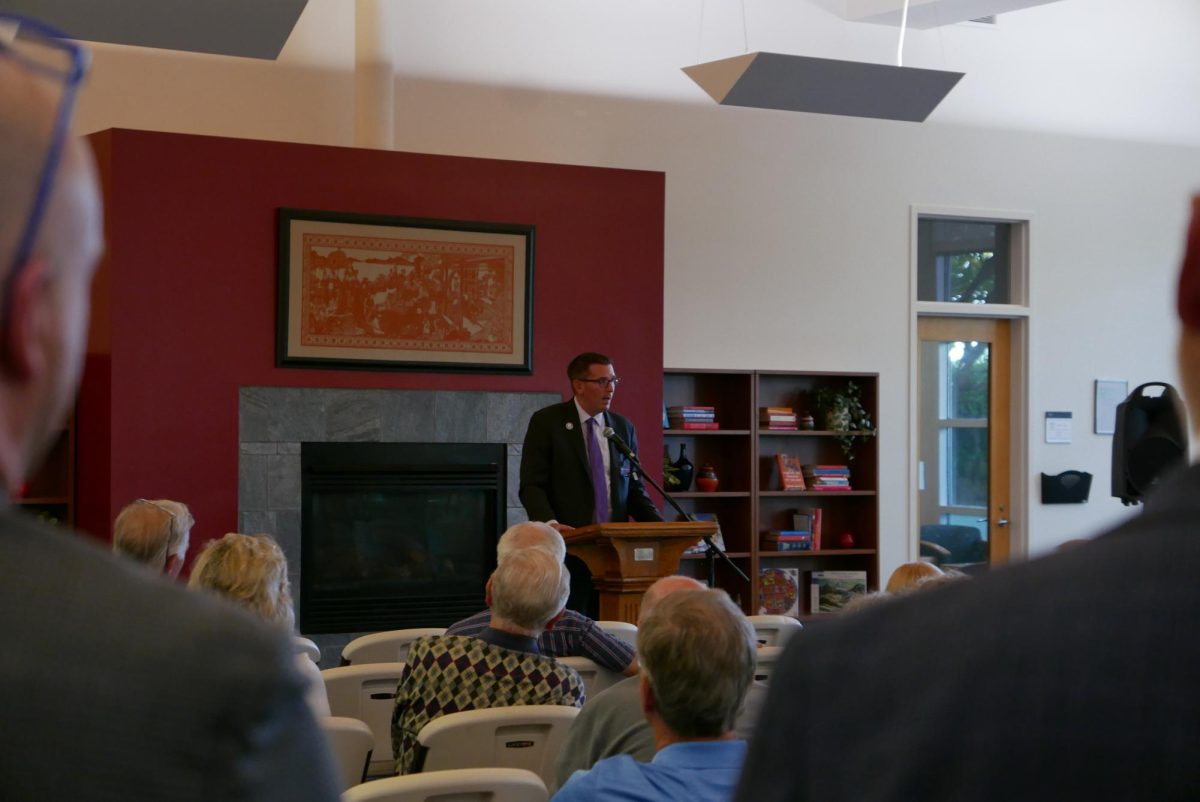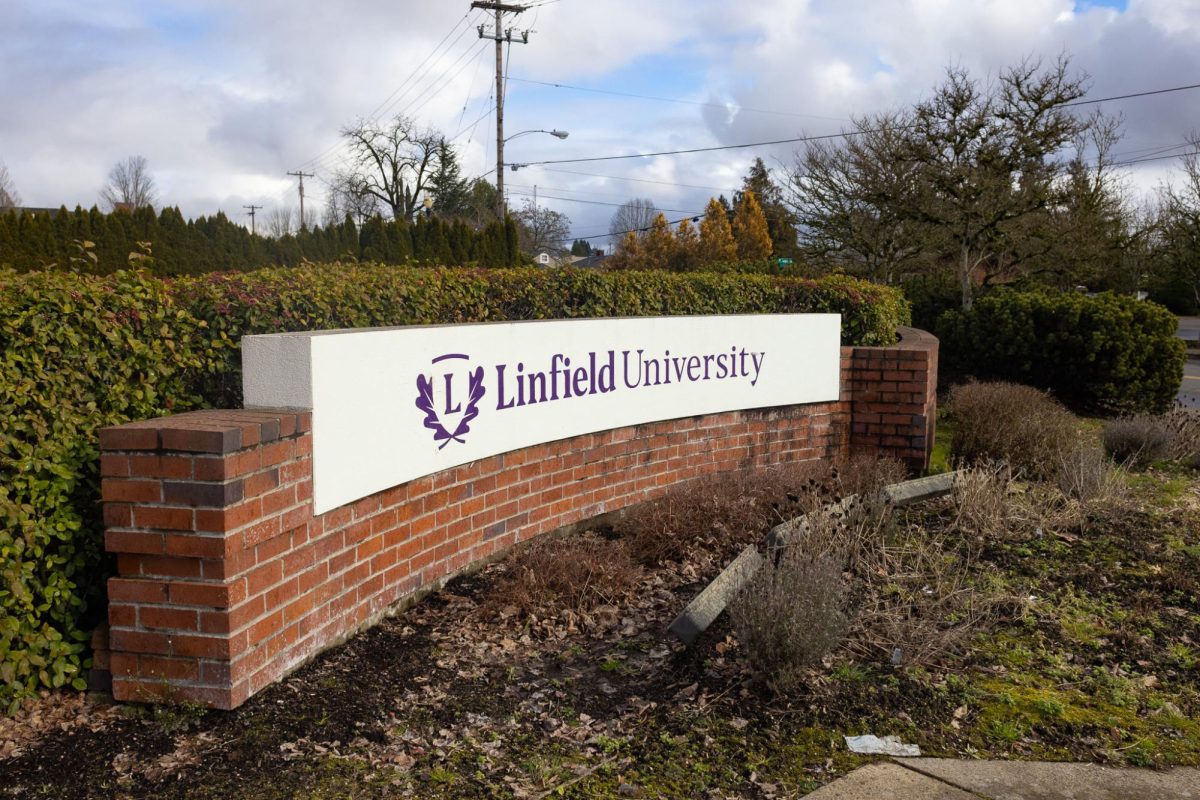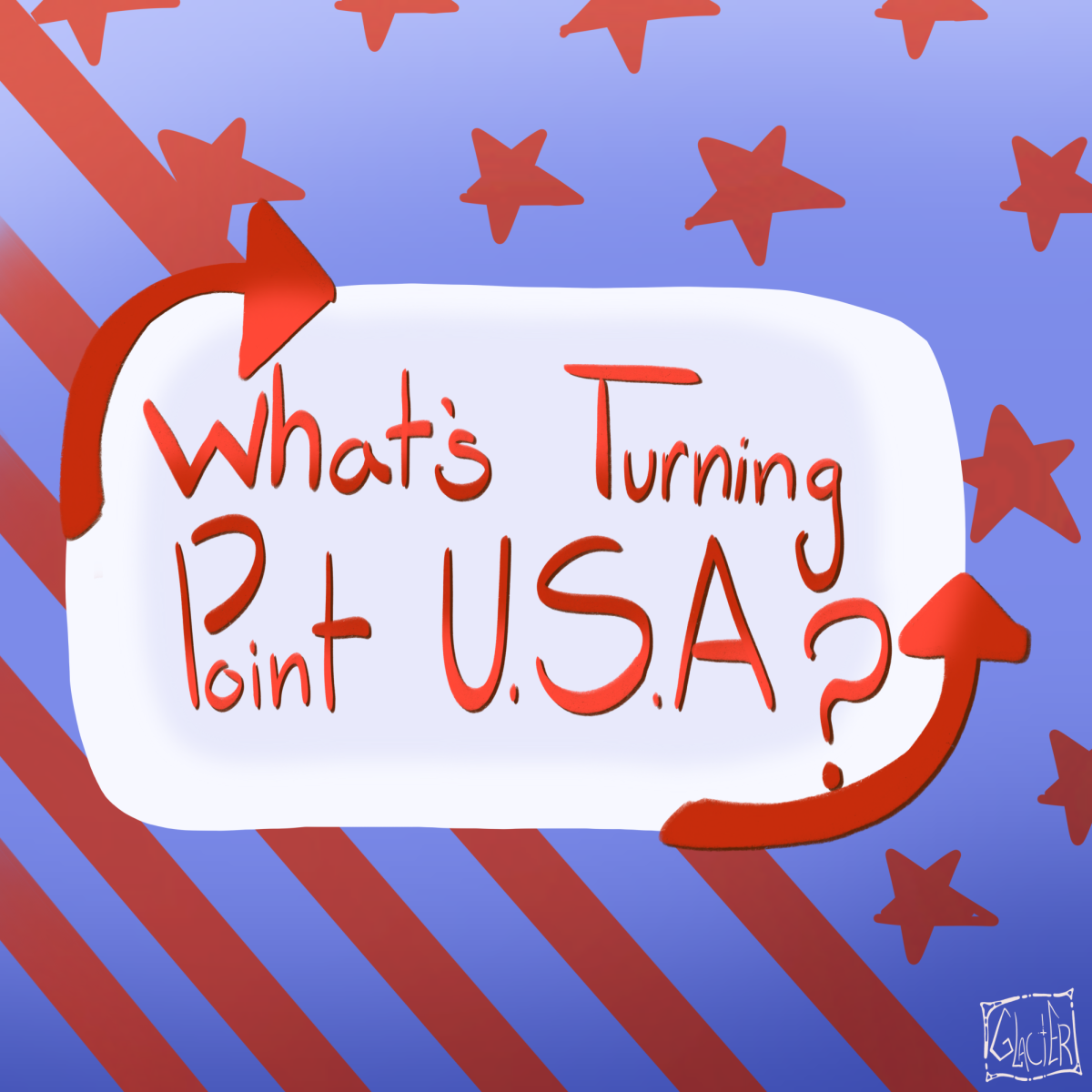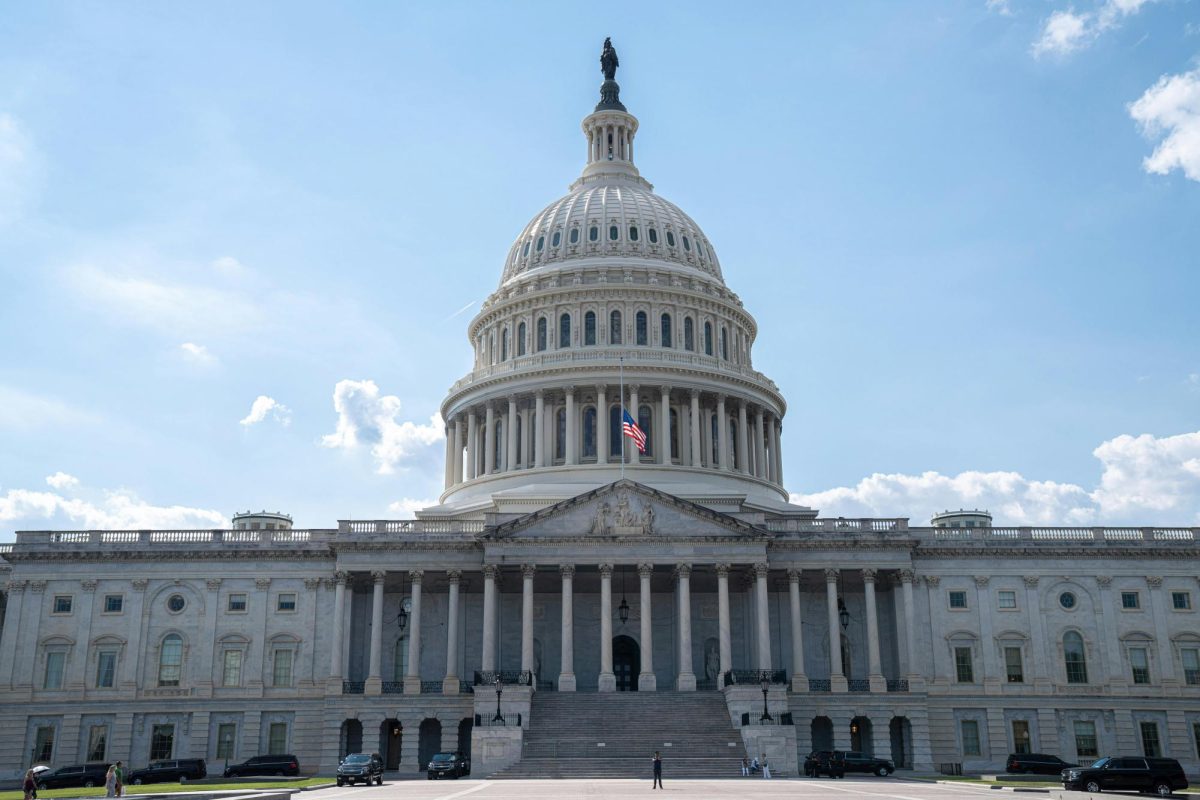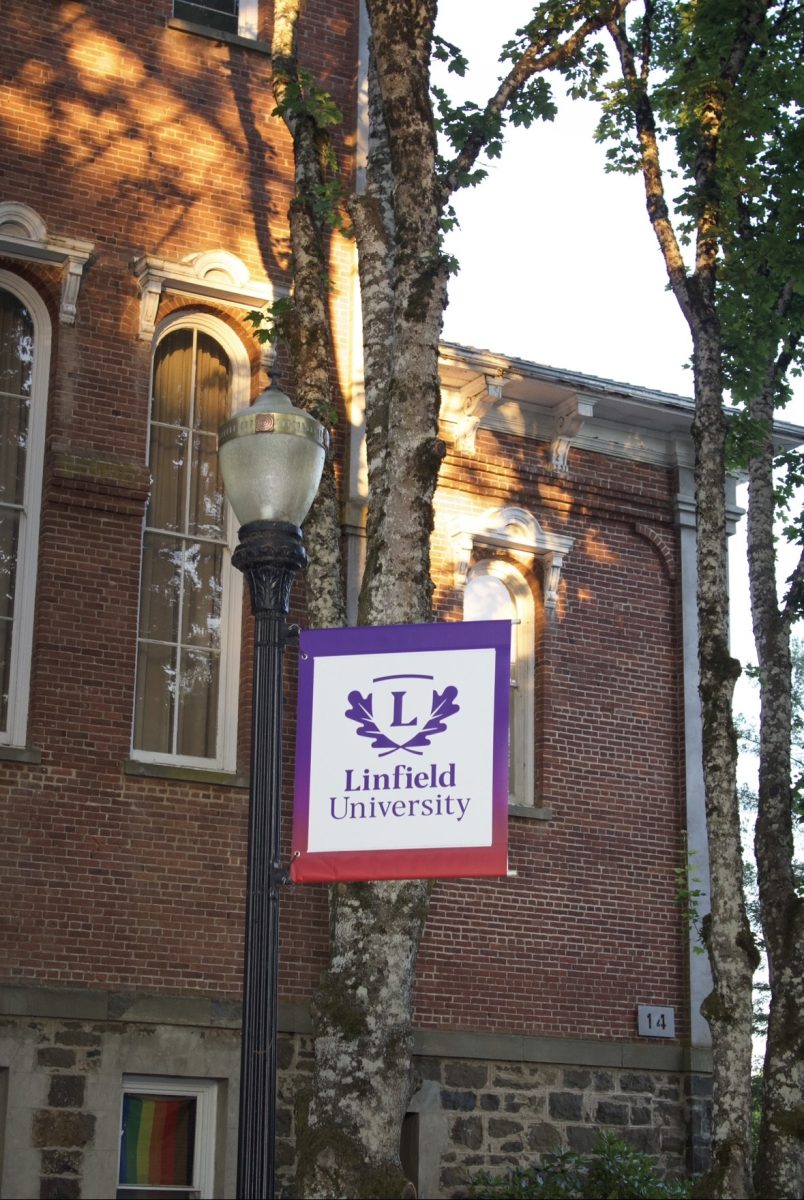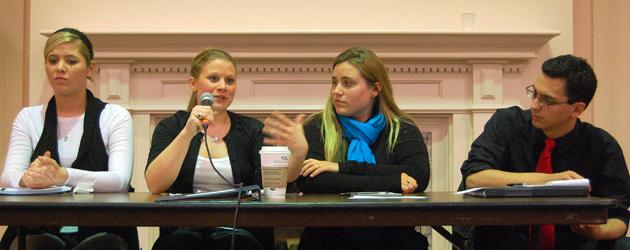
The Associated Students of Linfield College elections appear to have been plagued by low voter turnout, as indicated by a 123-student-vote drop from last year to this year.
ASLC higher-ups said that many factors may have contributed to the slump and that decreased voter turnout may not be such a major concern.
“We’d rather have ‘educated voters’ than ‘voters just voting because they feel forced to,’” senior ASLC President Ashlee Carter said in an e-mail.
ASLC president-elect junior Colin Jones shared Carter’s views.
“I don’t believe that voter turnout is the be-all end-all of importance,” he said. “I think what matters is that those who do vote are informed.”
Although one goal of sophomore ASLC Election Committee Chairman Bradley Keli’inoi was to improve turnout numbers, he said the goal was not accomplished, but he added that there was little more he and ASLC could have done.
“It’s really sad that it’s so hard to get people to simply click on a link and fill in two bubbles, but we really don’t know how much easier we can make it,” Carter said in an e-mail.
Everyone involved in the election planning said that awareness and publicity were major snags in the system that may have caused the low voter turnout.
“The results showed that either people didn’t know about [the election] or our elections committee and the candidates failed to advertise that voting was taking place,” sophomore ASLC vice president-elect Katie Patterson said.
To Keli’inoi, it was a bit of both.
“Walking around, I’ve just wondered, ‘Is there an election actually going on?’” he said, adding that he saw only one campaign poster — belonging to Patterson — appear in Dillin Hall this year. “If you’re running, you should be busting your behind getting people to vote for you.”
In fact, Keli’inoi said that when he got the link to vote March 9, he wasn’t sure he knew the candidates well enough, even as the elections committee chair.
Some students have said that the e-mail with this link to the ballot looked a lot like spam. That’s because it was.
“The e-mail is sent through Survey Monkey, so it technically is spam,” Jones said.
He explained that this had to be the format because Survey Monkey was the only program that would provide unique links for every student. Jeff
Mackay, associate dean of students, could not send these distinct links in a campus-wide e-mail, Jones said.
He also mentioned that the content of the publicity may have been a problem. He said that it was necessary to convey both the event and its importance. Without this, the information overload from fliers
and campus-event advertisements causes students to filter information that they don’t perceive as exciting.
Assumed similarity of the candidates may have prevented students from realizing this importance, Jones said.
“If you have two candidates that maybe aren’t as polarizing, people look at it and say, ‘Eh, I’d be OK with either one,’” he said. “You don’t go to bed Monday night thinking, ‘I need to vote because I really don’t want that person to be president.’”
The 2009 presidential elections may have featured a higher voter turnout than this year because of this candidate polarization, Keli’inoi said, referring to the differing backgrounds, views and goals of Carter and senior Duncan Reid, who were the presidential candidates last year.
The March 1 primary debate was also affected by lack of promotion, resulting in low attendance. In fact, fliers for the debates were not posted until the same day.
“The publicity for the first debate went up the day of in a panic that I had totally spaced on publicity,” Carter said in an e-mail. “I was only reminded about publicity the day before it went up from Bradley, the election committee chair, and thank goodness he reminded me of this.”
The debates also provided challenges. For instance, Jones said sparking student interest for debate attendees was an arduous task.
“We’re not giving a sermon or an eulogy; we’re talking about things that are hopefully important to the student body,” he said. “It would have been nice if there were more people there and they were a little more rowdy.”
In a partial attempt to pinpoint key student issues, the March 8 debate featured a box for students to deposit questions in. But questions were still fielded by the moderators, Carter and Director of College Activities Dan
Fergueson.
Part of the reason for moderating questions is that no uncomfortable, awkward questions are asked. This arbitration maintains decorum and control, Carter said.
Keli’inoi agreed, adding that Carter and Fergueson controlled the debate’s duration.
“It’s not like an actual American presidential debate,” he said. “We’re students; we don’t want to be here for three hours.”
While Patterson agreed that refereeing the questions prevented personal attacks on the candidates, she also said that it may have contributed to the candidates imparting analogous responses.
“Having questions basically put together by the elections committee, I feel they are basically asking us to give cookie-cutter answers if they are going to ask cookie-cutter questions,” she said.
Other problems with the election included what seemed to be great haste in putting it together.
Jones said that the election schedule, which is supposed to be approved in November, did not get presented until the last meeting of Fall Semester, and Senate had to suspend ASLC Bylaws in order to vote on the schedule in the same week.
And Jones’ write-in candidacy caused more than a few problems for the election organizers. Carter said that write-ins rarely occur, so there was a lot of debate about when he could publicize, how his name would appear on the ballot and how to interpret the bylaws’ discussion of a write-in candidate.
Some may wonder why a write-in option isn’t included on each ballot. According to ASLC Bylaws, only write-in votes for an official, declared write-in candidate are valid. So this year’s votes for the likes of junior Ryan Henderson, Mickey Mouse and Kim Kardashian were disqualified from the ballot count.
But despite write-in confusion, Keli’inoi said that Jones’ candidacy was beneficial to the overall election.
“I do think had Colin not become a write-in candidate — I don’t even want to know what the number would have been,” he said. “It would have been so low.”
Besides the ambiguous write-in candidate details, Carter’s abrupt takeover of election duties threw another wrench in the election system.
The duties of heading elections were passed to Carter once junior ASLC Secretary Shelby Simmons put in her candidacy. The secretary’s duties of running the elections, by ASLC Bylaws, are passed to the president or vice president. Carter said that she underestimated the amount of responsibility and time that would be added to her already busy schedule. She also said that she wants to look into changing the bylaws to potentially allocate the responsibilities to a different Cabinet member.
But even with all of these problems cropped up around the elections, the organizers were, overall, happy with how it went.
“It’s organized chaos,” Keli’inoi said.
He said he will write up an election timeline to help future election committee chairpersons clarify when deadlines occur.
Carter also said she wanted to create guides for future ASLC members that outline the roles of the election committee chairperson and the head of elections (the secretary) to ensure that no confusion, overlap or forgetting of tasks occurs. She also said she wanted to draft an outline for overall elections.
“There are no set guidelines to follow to make sure that every piece is covered,” Carter said. “I’m planning to put together a step-by-step guide for the election process, and how soon things need to be accomplished in advance, to make sure this doesn’t happen again in the future.”
Kelley Hungerford
Managing editor Kelley Hungerford can be reached at [email protected].

